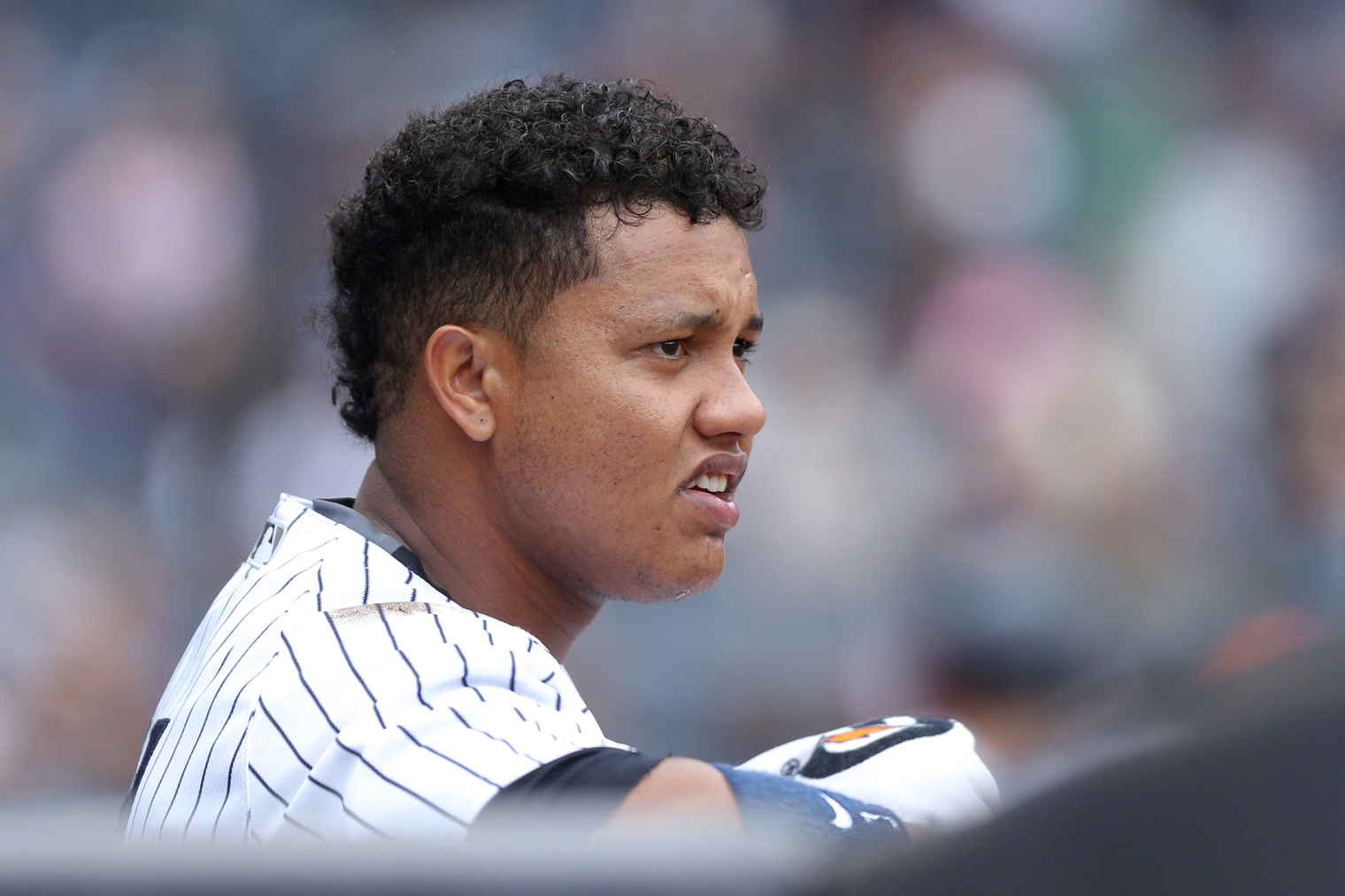Starlin Castro makes his return to Wrigley Field this afternoon, last playing in the Confines in the lamentable fourth game of the 2015 NLCS, when the wind had just about entirely been let out of the surprise 97-win season. I have written elsewhere that to be traded away from a team so on the cusp of such great heights is Langston Hughes-ian, and maybe for no one more so than the shortstop turned second baseman who was shuttled to the Bronx not long after the Mets swept the Cubs and advanced to the World Series.
The Cubs have moved on from Castro and from being the lovable losers, leaving the old failures to fizzle in our collective memories, but the team’s former shortstop deserves some credit and some homage for standing in the years between the team’s last, albeit mostly hapless, run at the postseason in 2007 and 2008 and the last year in which the Cubs would come short of burying everything that had weighed on the team for a century.
He perhaps no better symbolized the in-between of the franchise than in his May 7, 2010 debut. In Cincinnati, the Cubs sitting at 13-16 and five games behind in the division and still somewhat fresh off of the maddening 2009 campaign, Castro strode to the plate in the second inning, his team tied with the Reds and runners on the corners. He worked the count to 2-2, and before the next pitch, took a deep breath and nervously straightened his batting gloves.
The Cubs at that point were still just a few months removed from new ownership, having shrugged off the last vestiges of the Tribune’s hold and turned over to the Ricketts family, who had emblazoned the city with “Year One” billboards which, at the time, might have understandably inspired a good number of cynical smirks.
The franchise was also still a little more than a year away from a new front office too, the one that would take that billboard mantra and culminate it in a championship just a handful of years later.
But in that at bat, all of this was still very far away. It was hard to guess at what difference new owners would really make—Cubs fans had been there before—and Jim Hendry still had his clutches on the team.
So maybe Castro’s first appearance didn’t stand out so symbolically then, but hindsight has afforded us better opportunity to see it through a more poetic lens.
After his deep breath, Castro set his bat on his shoulder and tagged Homer Bailey’s hanging curve, knocking it just over the wall in right-center. In the moment, it was his first of six eventual runs batted in and cause for momentary excitement among Cubs fans.
In the years that followed, Castro gave Cubs fans reason to watch in the leanness of losing seasons that can only dull enthusiasm even among the most fervent of fanbases. Any look back at the Cubs lineups of 2010-2013 or so is a mostly frightening venture, but there was always Starlin. He never seized a leadership role like Anthony Rizzo did when he came from San Diego, and his final season in a Cubs uniform was clunky and ill-fitting, forced to move to second base to make room for Addison Russell, but he did it with some degree of grace and then eventually returned to the lineup for a torrid September that helped lead the Cubs to the second wild card spot. The memory of his month at the plate might be buried in Jake Arrieta’s Cy Young run, but it was an apt regular-season finish to his tenure in Chicago.
Looking back on 2010 then, Castro symbolized the in-between. His team was in an ill-fitting and uncertain spot, and he was one reason to tune in. He symbolized it in his jersey that looked just a tad roomy and in his helmet bobbing down over his eyes as he rounded second base, grinning at what he had done that Friday afternoon in May.
Lead photo courtesy Brad Penner—USA Today Sports
